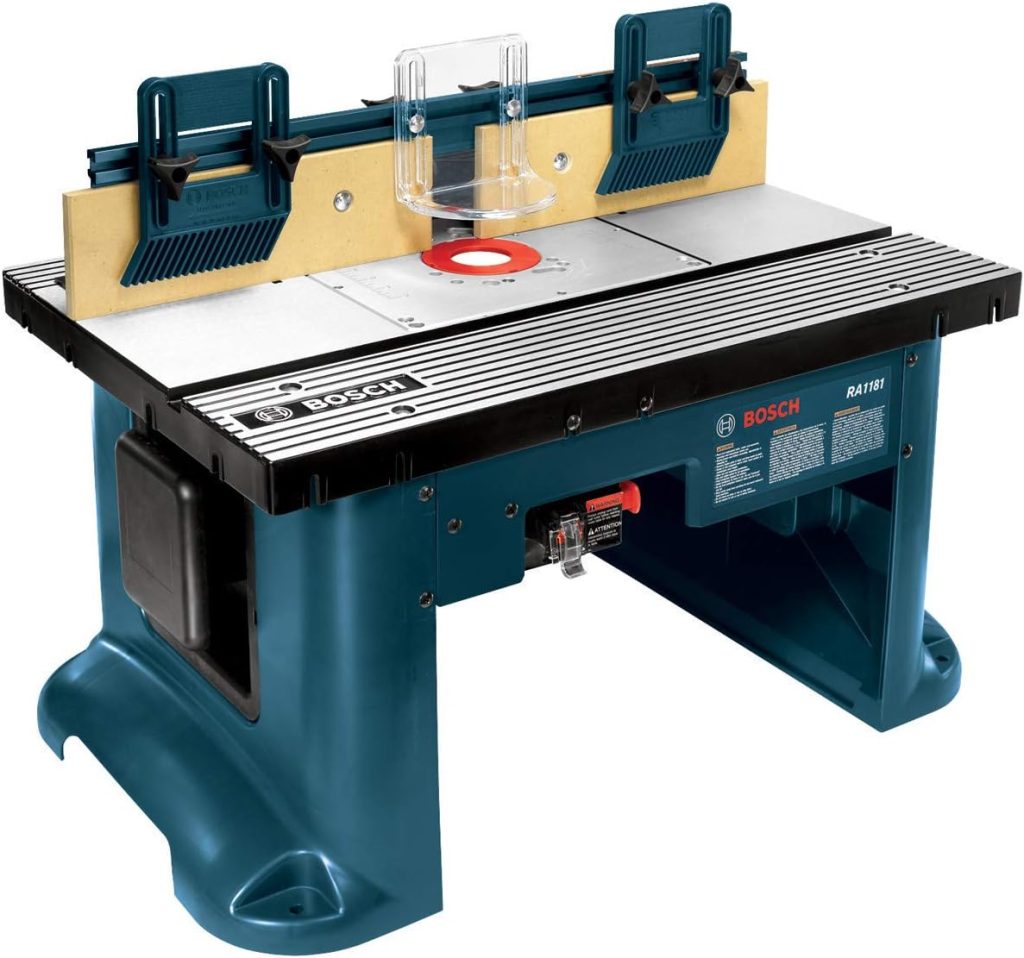Wood Routers
*We may earn a commission for purchases made using our links. Please see our disclosure to learn more.
Wood routers (or simply “routers”) are woodworking power tools that are essential for hollowing out, shaping, and creating intricate shapes and decorative designs on wood. Basically, a router consists of a motor housed in a handheld or table-mounted unit, with a collet that holds a variety of router bits.
Types of Wood Routers
Woodworking routers come in various types, each designed for specific tasks and applications. Here are some common ones:
- Handheld Router: The most common router type, which is used for tasks such as edging, shaping, and dadoes.
- Router Table: Mounted upside down in a specialized table, this variant allows for precise and controlled operations. This is useful for edge profiling and making long cuts.
- Fixed-Base Router: These are the most basic type of wood routers. They have a stationary base, and the cutting depth is already set.
- Plunge Router: Unlike the fixed-base router, a plunge router allows users to adjust the cutting depth while the router is running. This makes it suitable for tasks such as mortising and carving.
- Trim Router: These small and lightweight routers are easy to maneuver and control, making them suitable for light-duty tasks and fine detail work.
- CNC Router: Computer Numerical Control (CNC) routers are automated machines that follow precise instructions from a computer program. This is useful for intricate woodworking tasks that require high levels of accuracy.
- Laminate Trimmer: These compact and lightweight routers are specialized for trimming laminates such as plastic or veneer.
- D-Handle Router: This type of router has a D-shaped handle that provides better control and maneuverability, particularly for tasks that require freehand routing.
- Multi-Base Router Kit: Some wood routers come with interchangeable bases, allowing users to switch between fixed-base and plunge configurations.
Types of Router Bits
Routers use different bits to achieve a variety of cuts and designs. Some common types of router bits include:
- Straight Bits: Used for creating straight cuts, dadoes, and grooves.
- Roundover Bits: Used to round the edges of a workpiece.
- Cove Bits: Create concave curves or grooves.
- Flush Trim Bits: Ideal for making one workpiece match the shape of another.
- Dovetail Bits: Suitable for making dovetail joints, which are common in drawers and boxes.
- Rabbeting Bits: These can cut rabbets (rebates) or shoulder along the edge of a workpiece.
Handling Safety
Safety is of paramount importance when handling woodworking equipment such as the router. Here are some guidelines to ensure a safe experience for woodworkers:
- Learn Proper Usage: Learn how to properly use the power tool from more experienced practitioners. Practice first before doing the actual task.
- Use the Right Router and Bit: Various wood routers and bits work together to perform specific tasks, only use the proper tool for the job.
- Wear Safety Gear: Protect your eyes, ears, and lungs with goggles, hearing protection, and respirator.
- Wear Appropriate Clothing: Wear long sleeves, pants, and closed-toe shoes to protect against flying debris.
- Prevent Kickbacks: Securely clamp the workpiece to prevent kickbacks and other accidents.
- Adjust Depth Properly: Set the depth of the router bit to the correct level for your task. The bit should not protrude too far beyond the material.
- Turn Off and Unplug: Always turn off the router and unplug it from the power source when changing bits, or adjusting settings.
- Router Table Safety: When using a router table, use its fence along with some featherboards to guide the workpiece.
- Routing Direction: Feed the workpiece against the rotation of the bit (opposite to the rotation’s direction) to minimize kickback.
- Emergency Stop: Familiarize yourself with emergency stop features on wood routers for quick shut off.





Comments are closed.